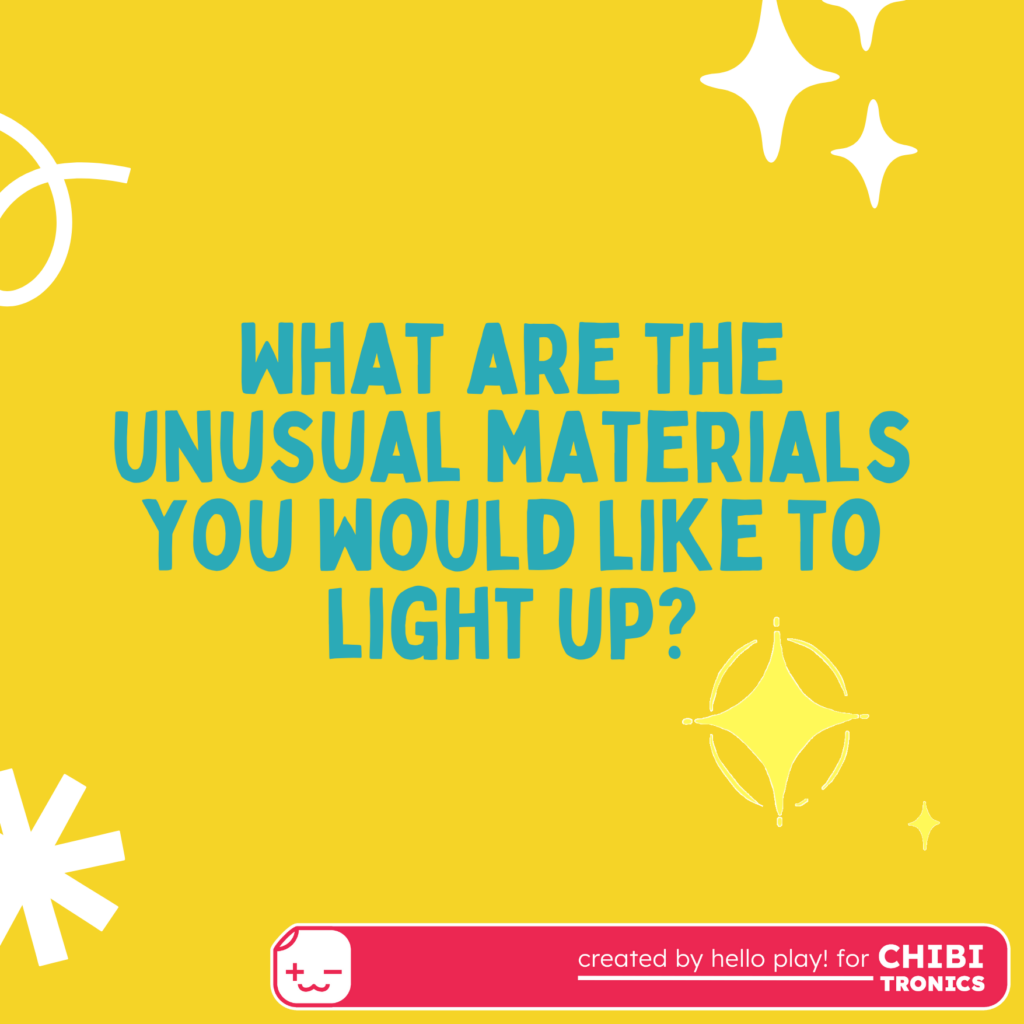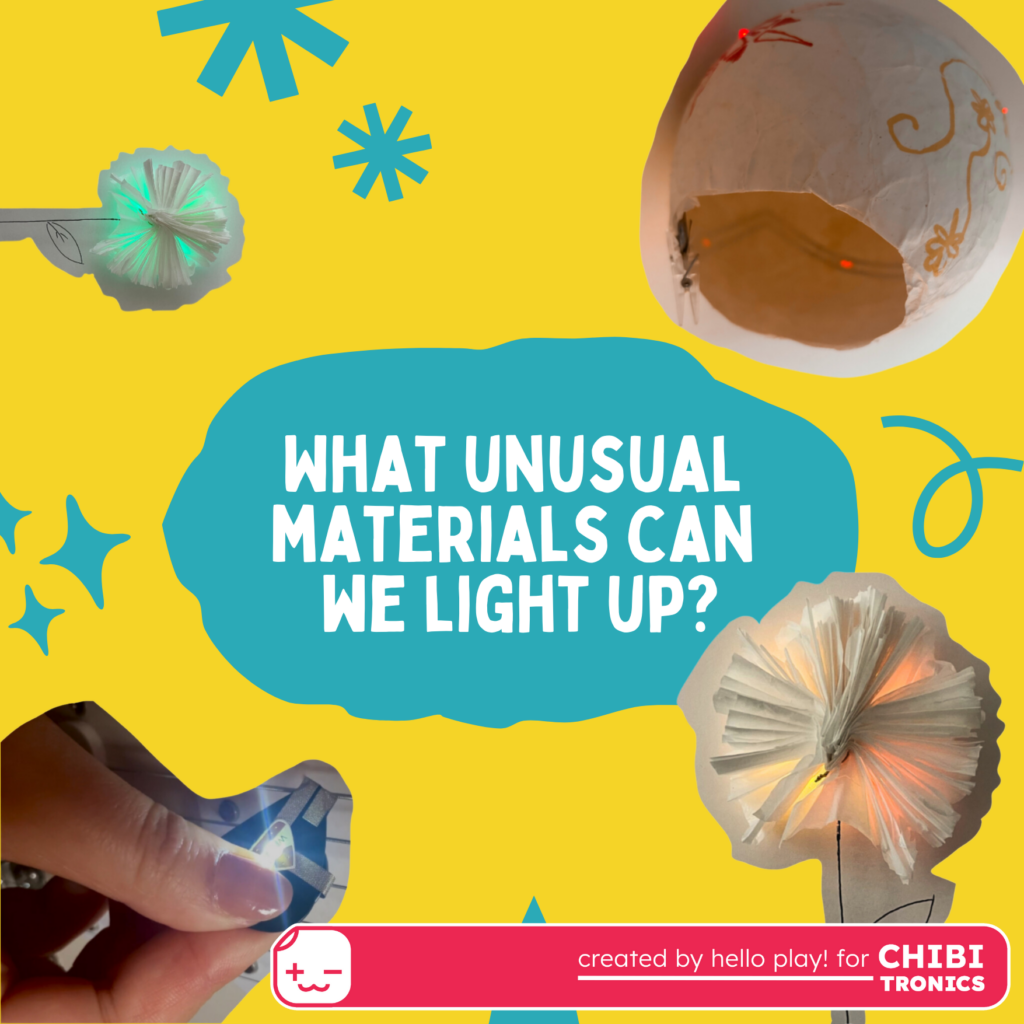
Hello Play! for Chibitronics
As a creative collective that wants to explore play, materials, and learning experiences, we (Andrea, Celeste, and Mariana) decided to have a making session with a theme of quirkiness.
What unusual materials can you light up? was the prompt we used to explore uncommon and unusual materials that we could make a project using Chibitronics.
We explored this theme by going around our houses to gather ideas and inspiration for what materials we could use.
These are some of our explorations: a plastic bag flower, a blinking guitar pick, and a paper maché balloon!
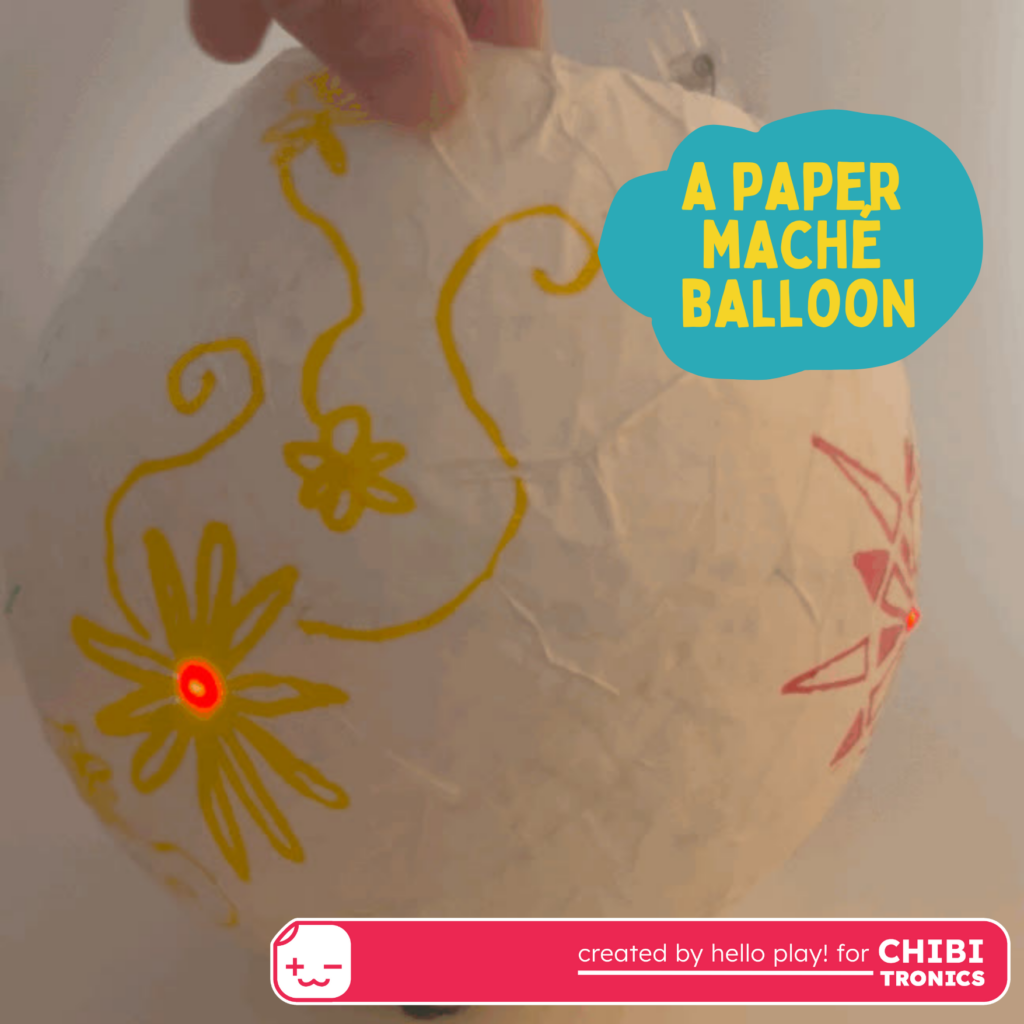
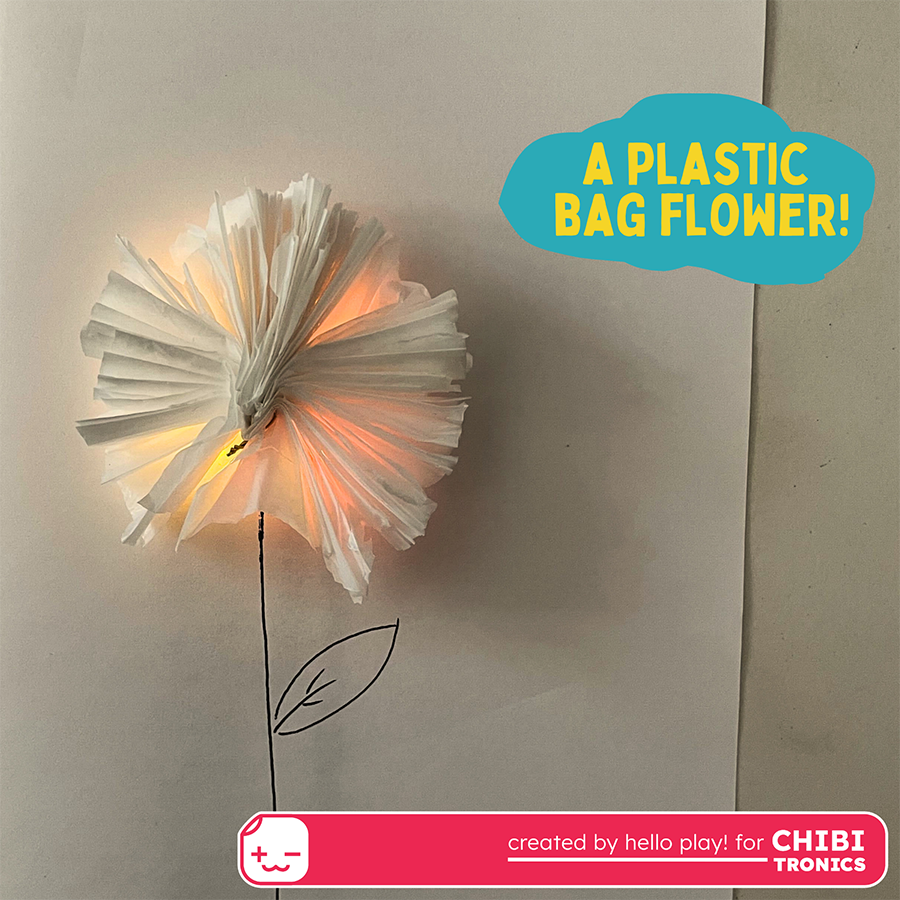
Plastic Bag Flower
You can repurpose a plastic bag by transforming it into a glowing flower!
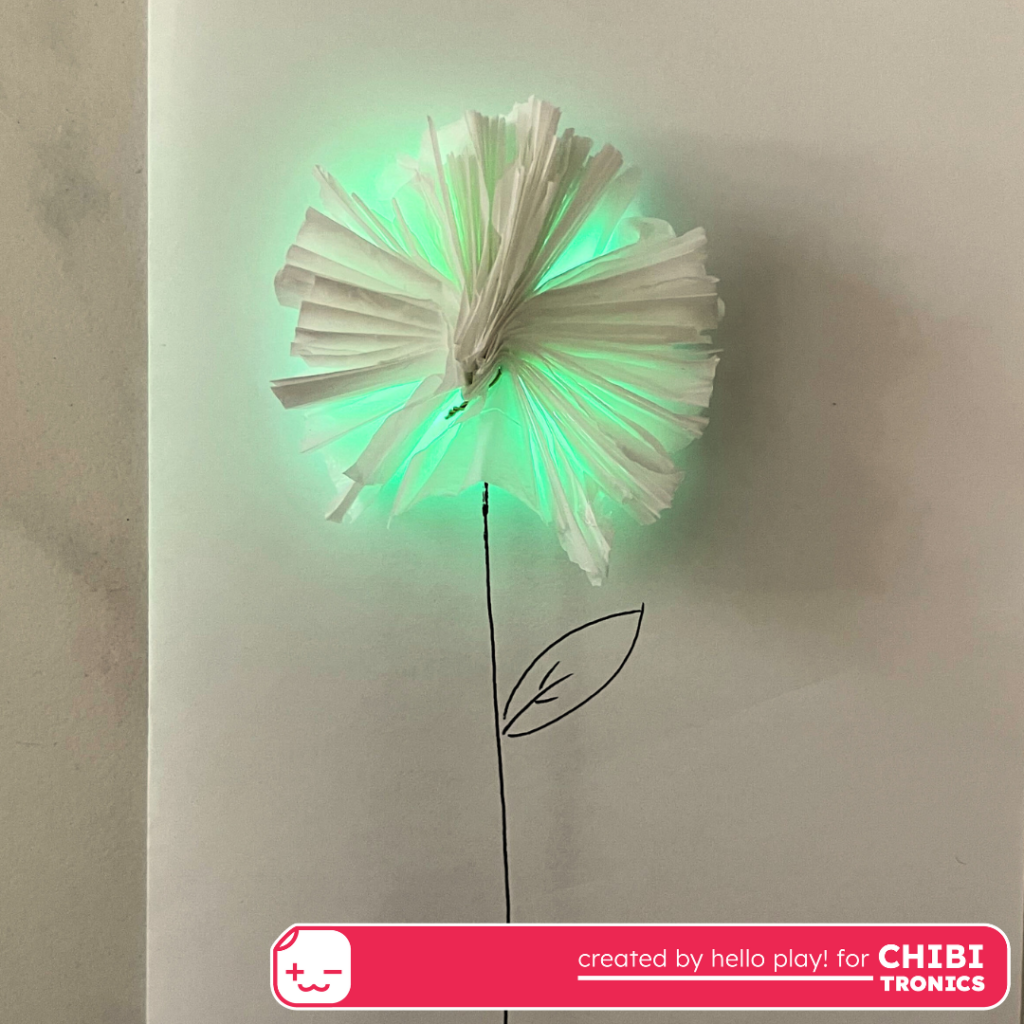
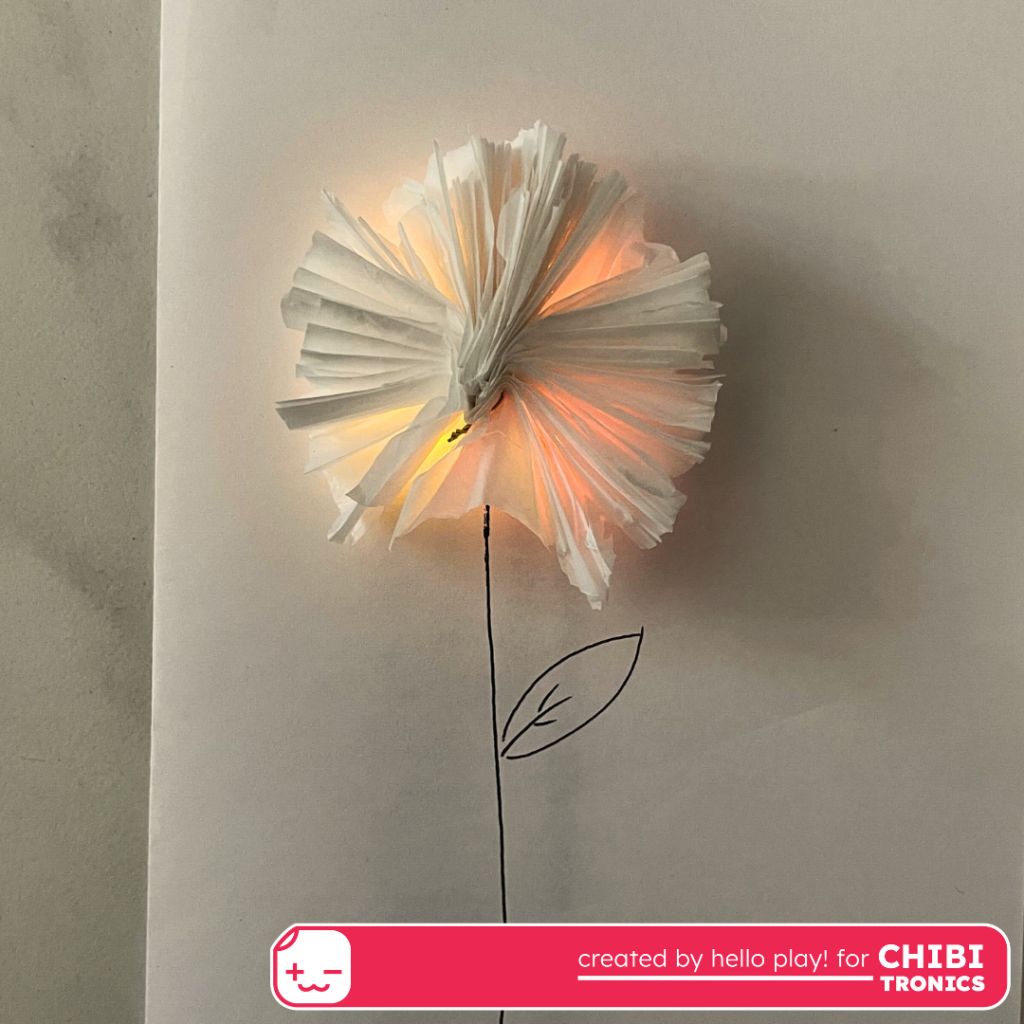
In this exploration, Andrea was interested in exploring how recyclable materials would diffuse light. She initially tried a brown plastic bag, but it was too dark. So she switched to a white plastic bag. Andrea decided to hide the circuit, but you could also play with using the circuit to create a unique stem for the flower!
If you want to try making this exploration, you can fold the piece of the plastic bag in an accordion shape. Then, you puncture a small hole and thread through a thin wire to hold it together.
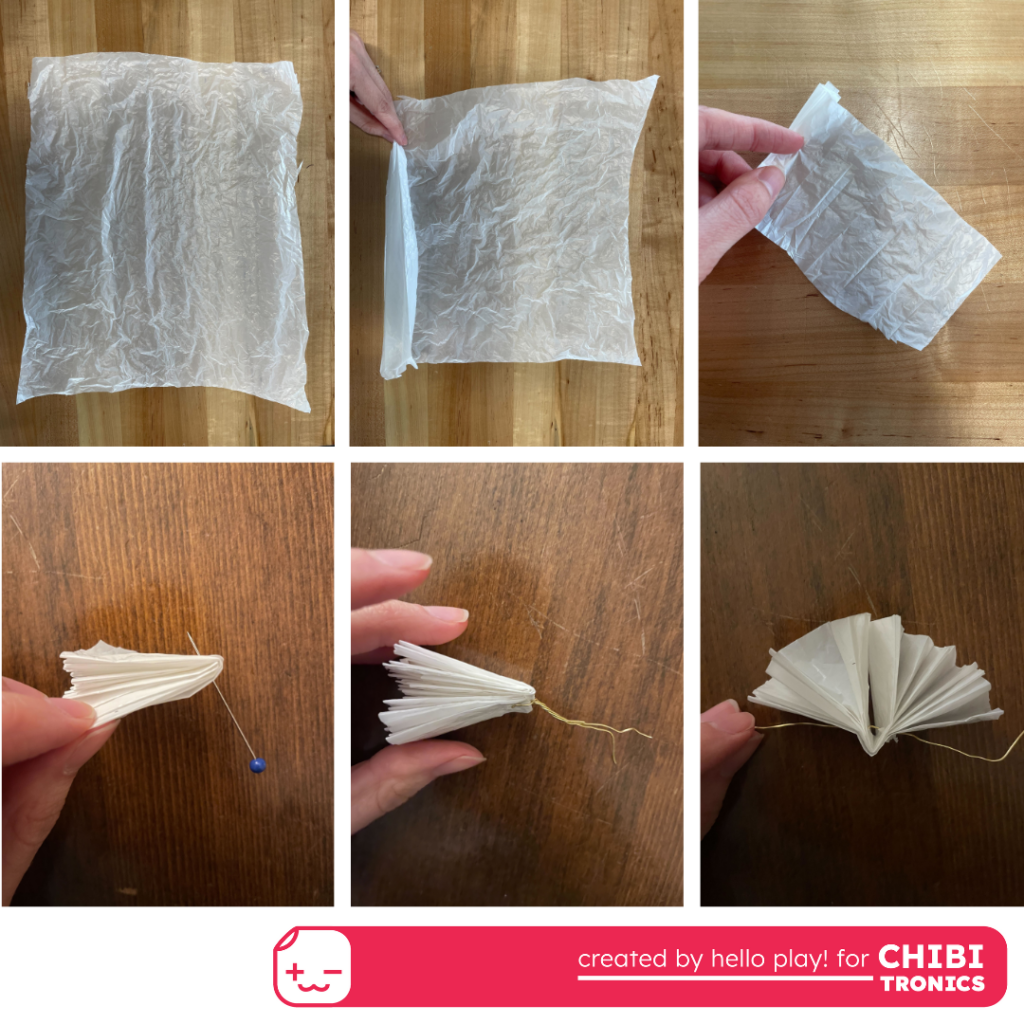
For the circuit, this is the one that Andrea created, but you can try other variations with more or less LEDs, or make it in a different shape.
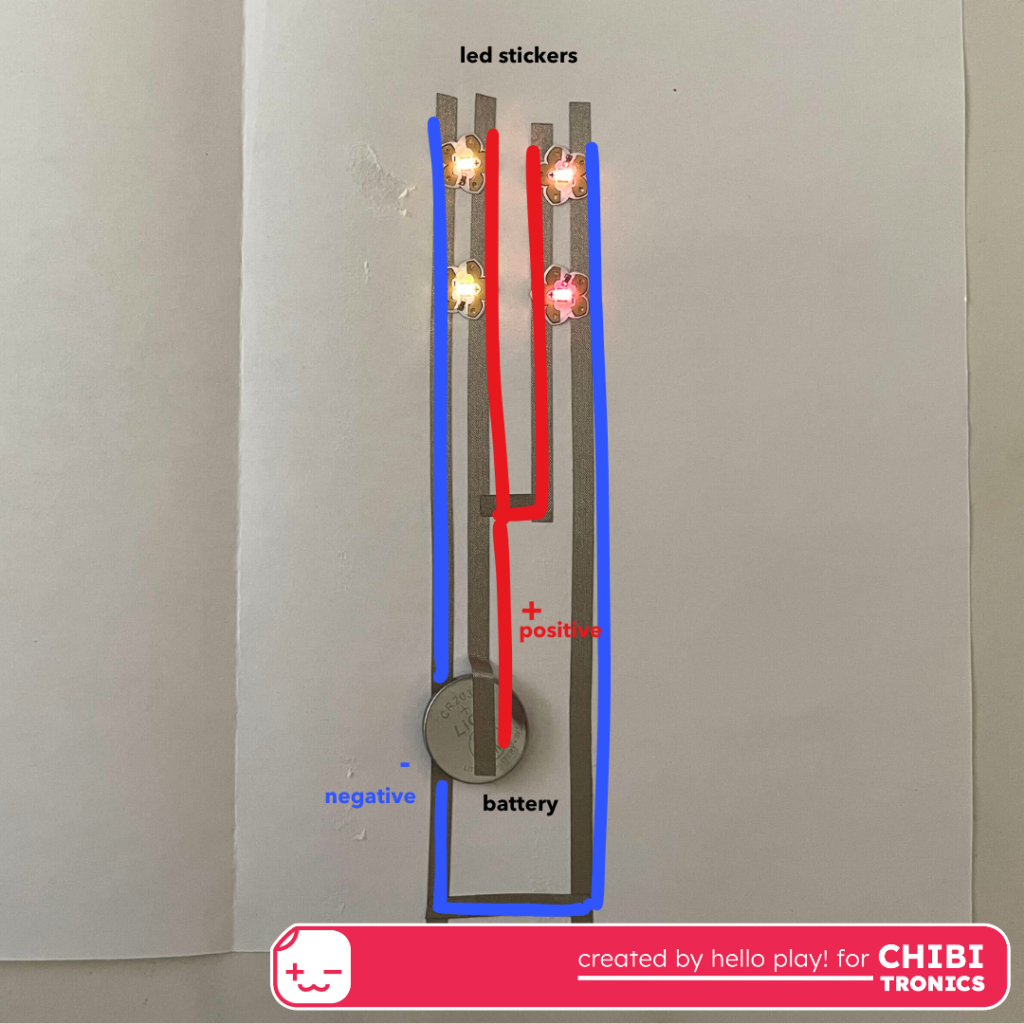
Materials used in this exploration:
- A piece of a white plastic bag
- A piece of wire
- Conductive Fabric Tape
- Chibitronics LED Lights
- Coin cell battery
- A piece of paper
Blinking Guitar Pick
Add some lights to your guitar playing!
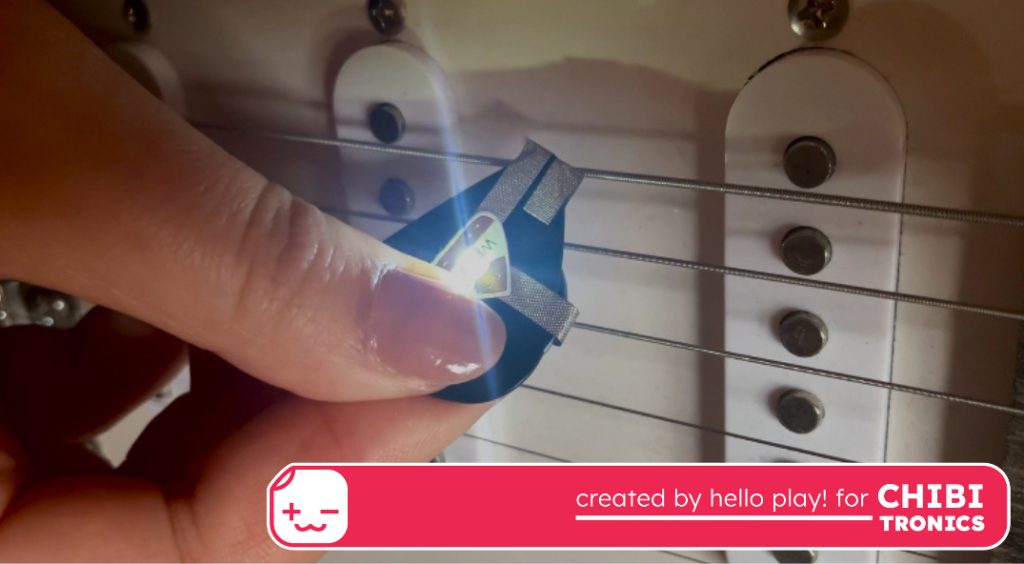
Mariana looked at her guitar and thought “What if I could make it light up?”. She then realized that the strings could be a part of the circuit and decided to explore how to embed a light on her guitar pick. (note: this was an exploration, so please be careful when tinkering with your instruments, especially electric ones).
She then started to wrap her head around how to make the switch of the circuit on the tip of the guitar pick, so that when it touches the string, the LED will turn on. After some failed prototypes she decided to make a prototype on a piece of post-it, which helped to visualize the circuit.
And then, this is how the circuit looks like on the guitar pick:
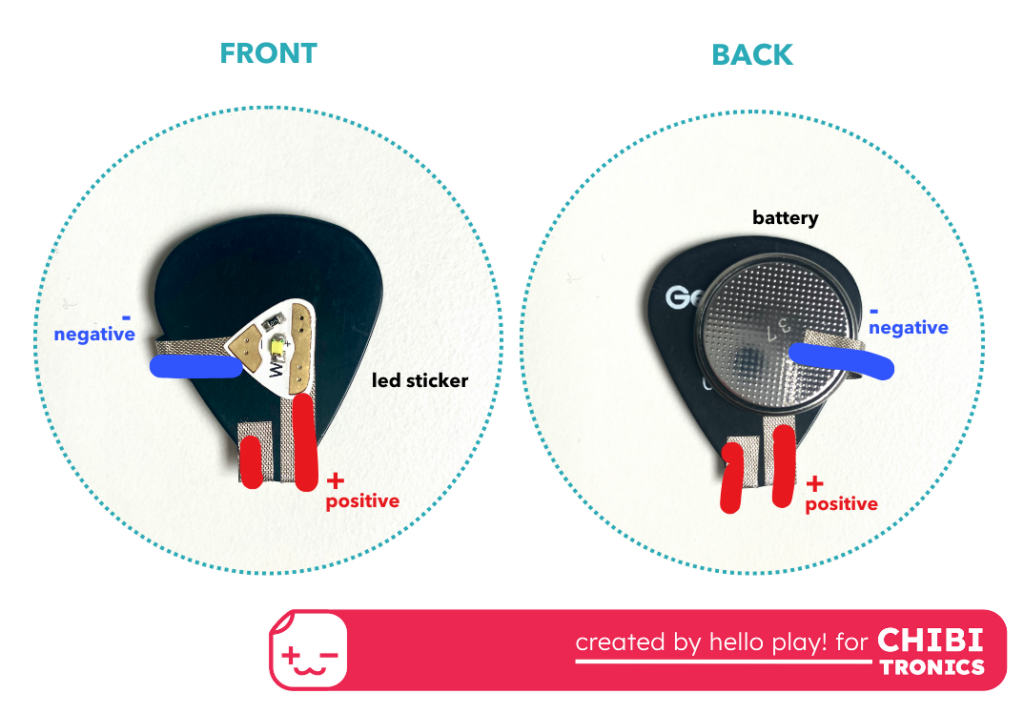
Observations: the circuit is not very robust since is a small surface that is being used as a switch (the tip of the guitar pick and the string). So it works better on the E string (the thickest one).
Materials used in this exploration:
- A guitar or any string instrument with metal strings
- A guitar pick
- Conductive Fabric Tape
- Chibitronics LED Lights
Paper Maché Balloon
Create 3D circuits with paper maché!
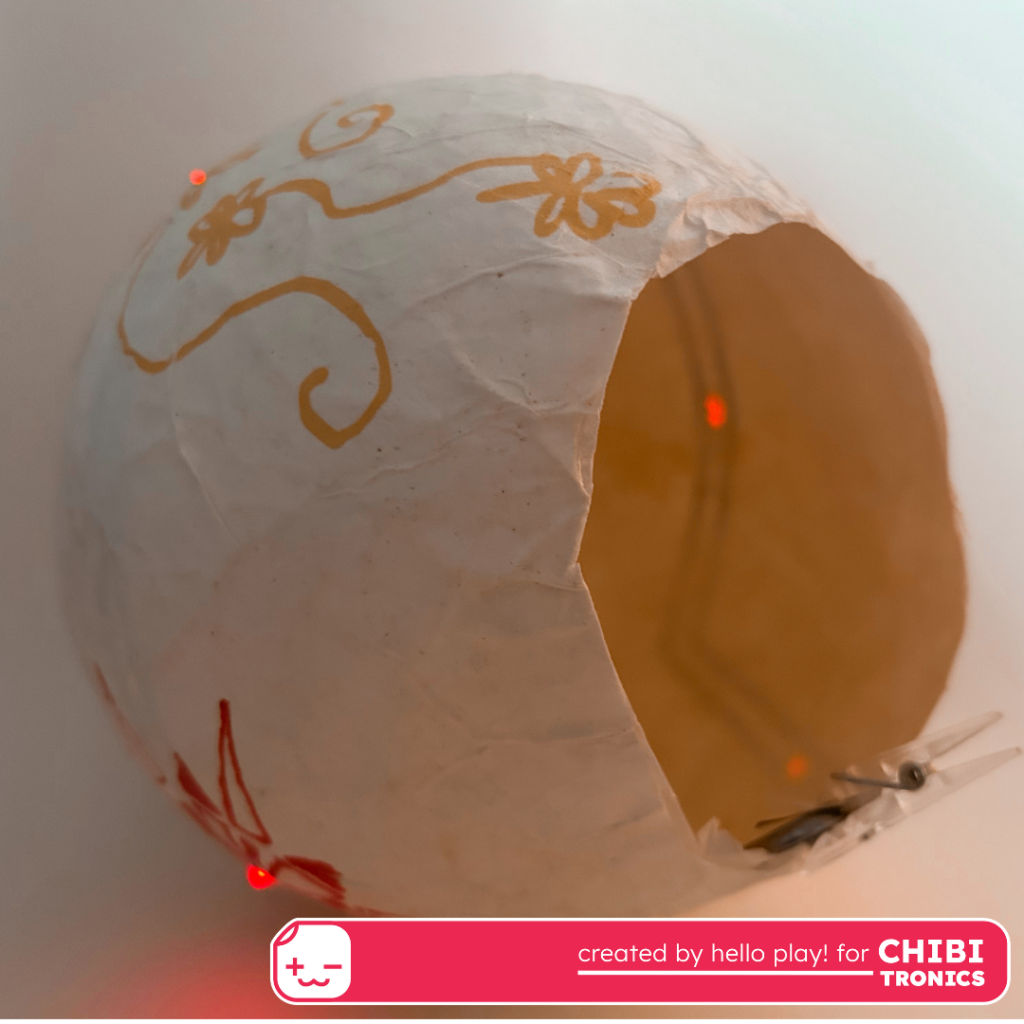
Celeste wanted to explore making 3D paper circuit sculptures. She was immediately curious to know if she could incorporate a circuit into the layers of paper maché and wondered if the glue, flour, and water mixture would damage the materials (note: this is just one experiment! Please be safe and thoughtful if you try this technique yourself)
She started with a balloon as her base and began by adding a couple of layers of paper mache to the balloon and letting it dry completely. Celeste used torn strips of rice paper to create a nice, blank white canvas for her circuit.
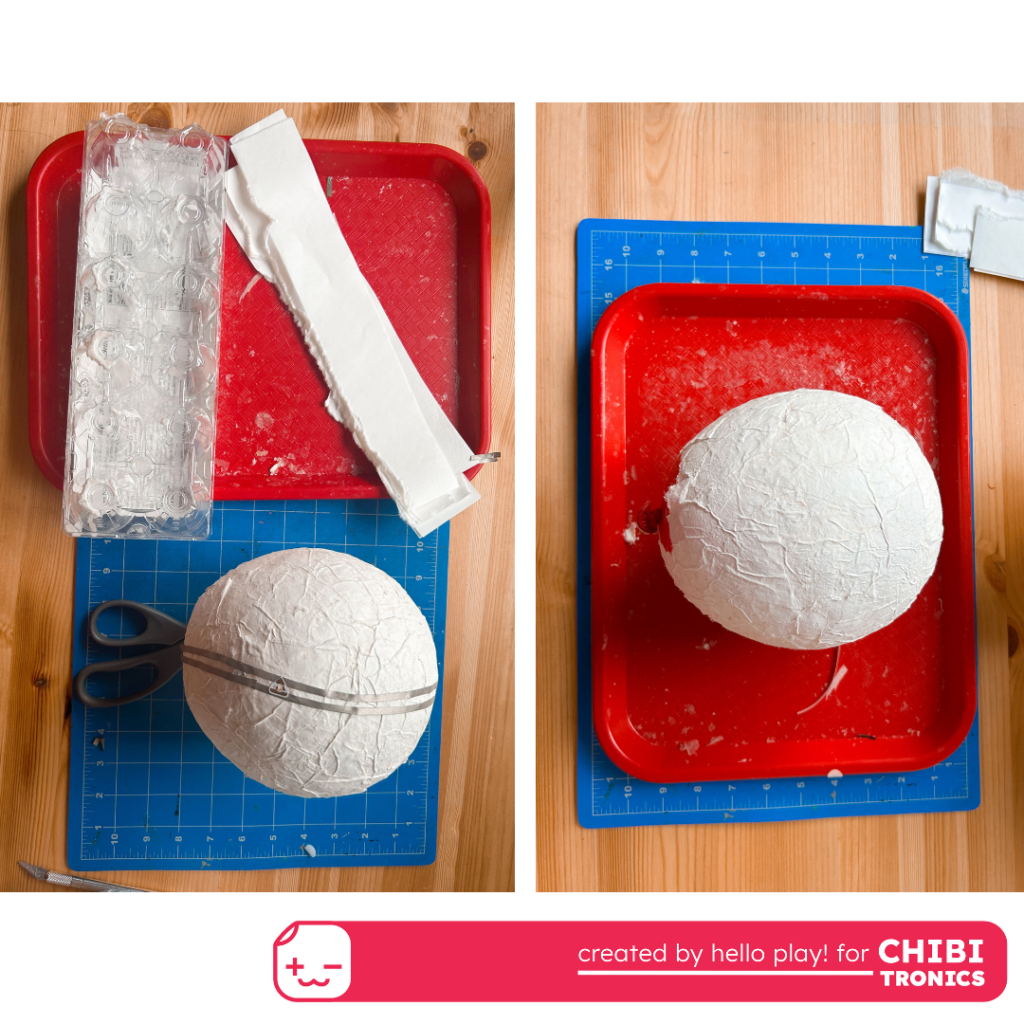
Next, she created the circuit on top of the dry paper mache. Then came the scary part! She added a few layers of paper maché on top of her circuit. (Note: if you try this process, wait until the paper mache is completely dry to test your circuit.)
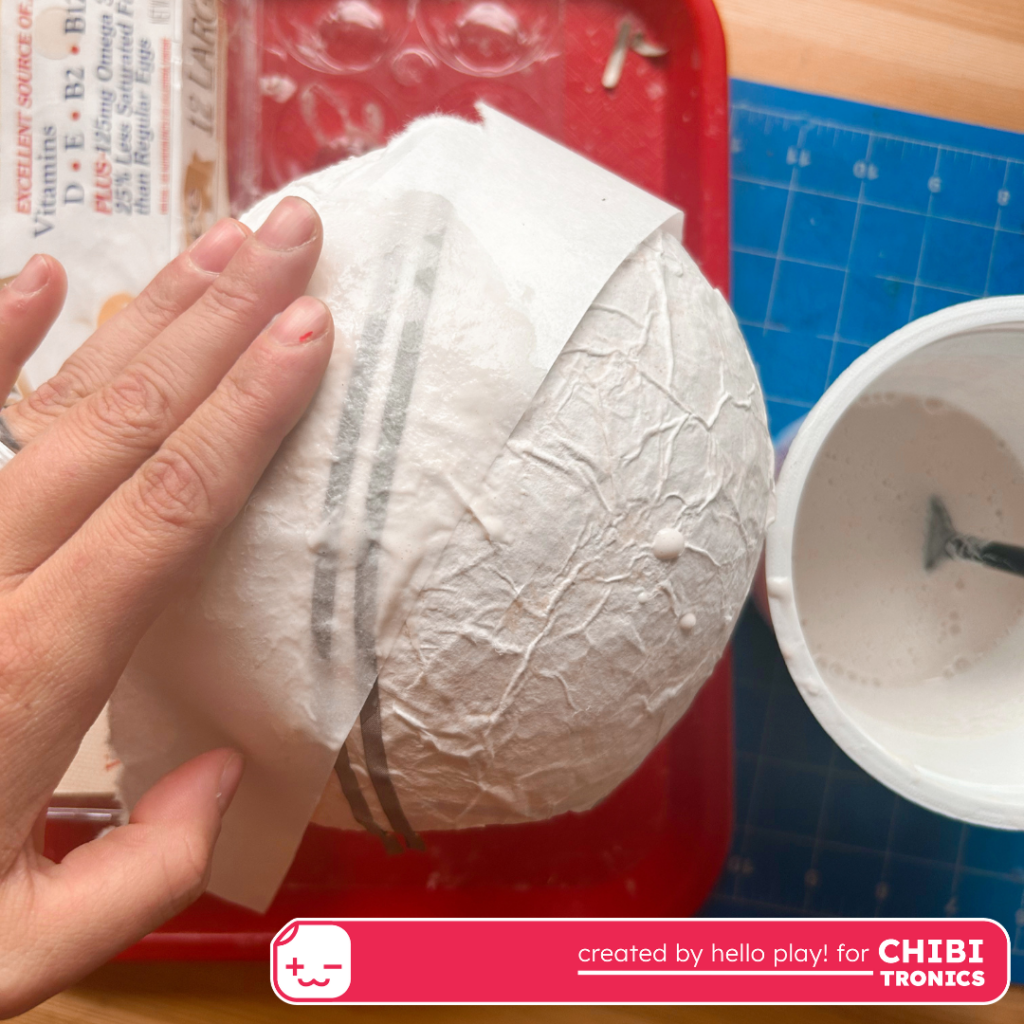
When the paper maché was dry, Celeste popped the balloon and removed it from the sculpture. She decided to add some decorations to highlight the LEDs, using paint markers to illustrate on top of the paper maché.
Materials used in this exploration:
- Paper maché
- Balloon
- Color markers
- Conductive Fabric Tape
- Chibitronics LED Lights
Your turn to explore!
We created some prompts that can help you do quirky explorations with Chibitronics!
Materials: what are uncommon materials that we could pair up with Chibitronics? (clay, food, paper maché, flowers, recyclables, etc.
Places: can you think about places where you wouldn’t see a paper circuit? (a light post, on a public bench, in your kitchen, on a tree?)
Scale: how can we play with scale using Chibitronics? (what would a gigantic light-up birthday card look like? can we make a tiny circuit for a firefly?
